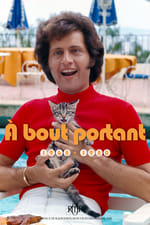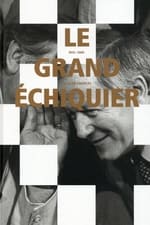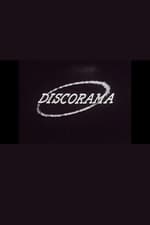Personal Info
Known For Acting
Known Credits 5
Gender Male
Birthday April 25, 1944
Day of Death August 16, 1988 (44 years old)
Place of Birth Tripoli, Libya
Also Known As
- -
Content Score
100
Yes! Looking good!
Login to report an issue
Biography
Herbert Avraham Haggiag Pagani (25 April 1944 in Tripoli – 16 August 1988 in Palm Springs, California) was an Italian artist and musician.
Pagani was born in a Jewish family in Libya, just around the time when the country stopped being an Italian Colonial Administration. He spent his childhood and adolescence between Italy, Germany and France. This nonstop wandering about different cultures drove him to seek out a personal language that would enable him to express himself non-verbally, and he started drawing.
In 1964 Pagani, at the age of twenty, had his first exhibition at the Pierre Picard Gallery in Cannes, where he exhibited a group of Indian-ink drawings and engravings. The French poet Jean Rousselot wrote an enthusiastic review in Planete, describing Pagani as a "Twenty-years-old Visionary". Among his first Italian collectors were Giorgio Soavi, Federico Fellini, Bernardino Zapponi and the Olivetti Collection. Shortly afterwards, he was invited to contribute a series of drawings for the Planète review edited by Jacques Bergier and Louis Pauwels, becoming one of the youngest exponents of the Fantastic Realism. In 1965 Pagani illustrated books such as Giuseppe Berto's Fantarca (Rizzoli) and Aldous Huxley's Brave New World (Club des Amis du Livre).
Parallel to art, Pagani pursued an interest in music. His first Italian album was released in 1967. About two years later, the day after Colonel Muammar Gaddafi's 1969 Libyan coup d'état, the police broke into Pagani's family's house in Tripoli. A hundred and fifty canvases and drawings were destroyed. His first French album, chronicling those events, was released in 1970. Pagani designed the covers of his records, and the stage designs of his shows.
In 1971 Pagani had a solo exhibition at the Théâtre de la Ville in Paris called Concerto d'Italie where he did a performance inside his drawings projected on a large screen by Laser Graphics Group. This was the first Diaporama exhibition staged in Europe. Pagani was interested in investigating the correlation among all the techniques he was to try out. Already in 1965 he had declared that "Engraving on stone, or vinyl, is the same thing. It is more important to establish one' s mental and emotional territory with all available means".
In 1973 Pagani used documentary footage made available by RAI to produce and direct a 27-minute movie-pamphlet entitled Venise, amore mio which Unesco defined as "the best vehicle of information on the dangers besetting Venice and its lagoon". The film was later broadcast on Antenne 2 twice. ...
Source: Article "Herbert Pagani" from Wikipedia in English, licensed under CC-BY-SA 3.0.
Herbert Avraham Haggiag Pagani (25 April 1944 in Tripoli – 16 August 1988 in Palm Springs, California) was an Italian artist and musician.
Pagani was born in a Jewish family in Libya, just around the time when the country stopped being an Italian Colonial Administration. He spent his childhood and adolescence between Italy, Germany and France. This nonstop wandering about different cultures drove him to seek out a personal language that would enable him to express himself non-verbally, and he started drawing.
In 1964 Pagani, at the age of twenty, had his first exhibition at the Pierre Picard Gallery in Cannes, where he exhibited a group of Indian-ink drawings and engravings. The French poet Jean Rousselot wrote an enthusiastic review in Planete, describing Pagani as a "Twenty-years-old Visionary". Among his first Italian collectors were Giorgio Soavi, Federico Fellini, Bernardino Zapponi and the Olivetti Collection. Shortly afterwards, he was invited to contribute a series of drawings for the Planète review edited by Jacques Bergier and Louis Pauwels, becoming one of the youngest exponents of the Fantastic Realism. In 1965 Pagani illustrated books such as Giuseppe Berto's Fantarca (Rizzoli) and Aldous Huxley's Brave New World (Club des Amis du Livre).
Parallel to art, Pagani pursued an interest in music. His first Italian album was released in 1967. About two years later, the day after Colonel Muammar Gaddafi's 1969 Libyan coup d'état, the police broke into Pagani's family's house in Tripoli. A hundred and fifty canvases and drawings were destroyed. His first French album, chronicling those events, was released in 1970. Pagani designed the covers of his records, and the stage designs of his shows.
In 1971 Pagani had a solo exhibition at the Théâtre de la Ville in Paris called Concerto d'Italie where he did a performance inside his drawings projected on a large screen by Laser Graphics Group. This was the first Diaporama exhibition staged in Europe. Pagani was interested in investigating the correlation among all the techniques he was to try out. Already in 1965 he had declared that "Engraving on stone, or vinyl, is the same thing. It is more important to establish one' s mental and emotional territory with all available means".
In 1973 Pagani used documentary footage made available by RAI to produce and direct a 27-minute movie-pamphlet entitled Venise, amore mio which Unesco defined as "the best vehicle of information on the dangers besetting Venice and its lagoon". The film was later broadcast on Antenne 2 twice. ...
Source: Article "Herbert Pagani" from Wikipedia in English, licensed under CC-BY-SA 3.0.
Acting
|
||||||
|
||||||
|
||||||
|




